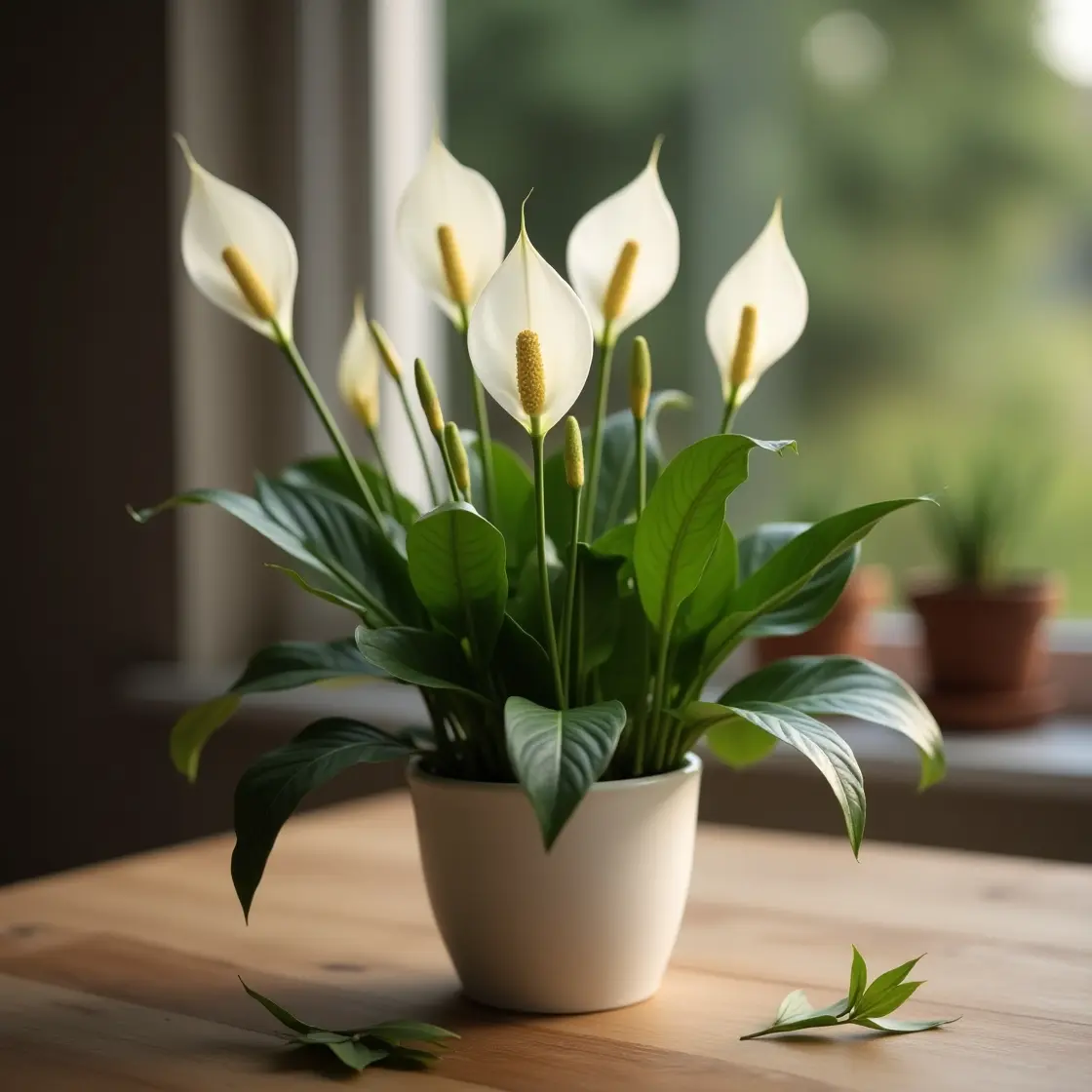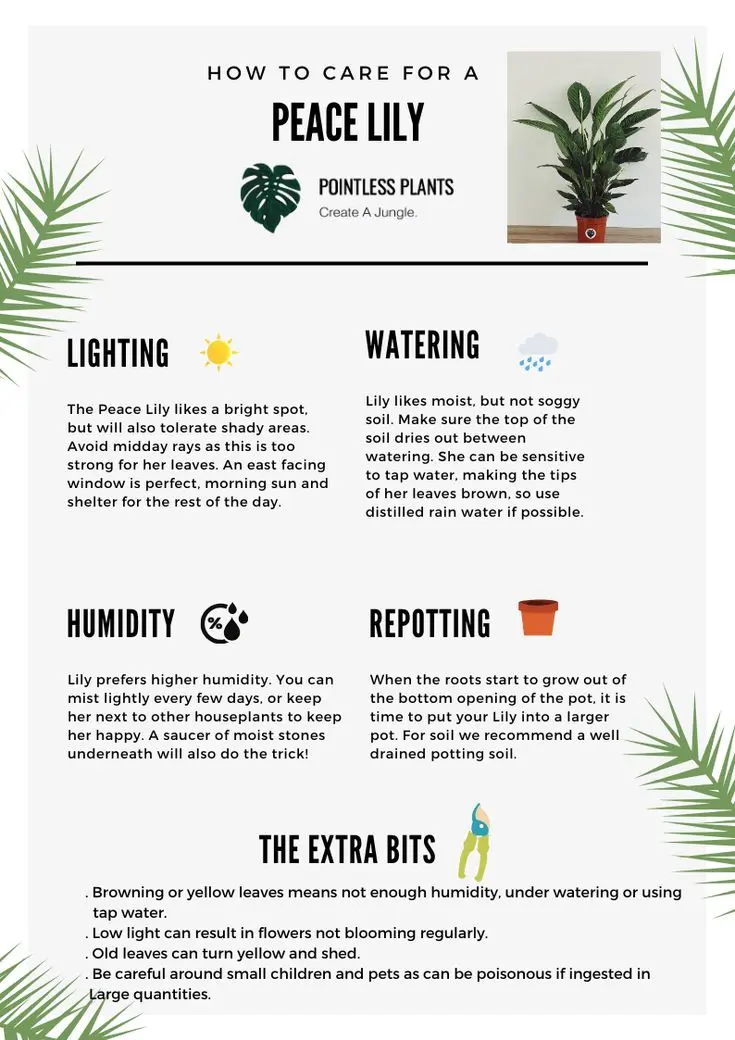Certainly! Here's a comprehensive, original guide to caring for your Peace Lily (Spathiphyllum), ensuring your plant thrives in your indoor environment.

🌿 Peace Lily Overview
The Peace Lily is a favored indoor plant known for its glossy green leaves and striking white blooms. Beyond its aesthetic appeal, it contributes to indoor air purification. Its adaptability and low-maintenance nature make it suitable for various indoor settings.

🌞 Light Requirements
Peace Lilies flourish in bright, indirect sunlight. While they can adapt to lower light conditions, insufficient light may hinder blooming. Avoid placing them in direct sunlight, as this can lead to leaf scorching.
💧 Watering Guidelines
Maintain consistently moist soil, allowing the top inch to dry out between waterings. Overwatering can cause root rot, so ensure proper drainage. If the plant wilts, it's a sign it needs water; it typically recovers quickly after watering.
🌡️ Temperature & Humidity
- Temperature: Ideal indoor temperatures range between 65°F and 80°F (18°C to 27°C). Protect the plant from cold drafts and sudden temperature changes.
- Humidity: Peace Lilies prefer higher humidity levels. Increase humidity by misting the leaves, placing the pot on a tray with water and pebbles, or using a humidifier.
🌱 Soil & Fertilization
- Soil: Use a well-draining potting mix to prevent water accumulation.
- Fertilization: Feed the plant with a balanced, water-soluble fertilizer every 6 to 8 weeks during the growing season (spring and summer). Reduce feeding in the fall and winter months.
🪴 Repotting & Maintenance
- Repotting: Repot every 1 to 2 years or when the plant becomes root-bound. Choose a pot slightly larger than the current one to allow growth.
- Cleaning: Wipe leaves with a damp cloth to remove dust and maintain optimal photosynthesis.
- Pruning: Remove yellowing or dead leaves to encourage new growth and maintain plant health.
⚠️ Safety Considerations
Peace Lilies contain calcium oxalate crystals, which can be mildly toxic if ingested, causing irritation. Keep the plant out of reach of pets and small children to prevent accidental ingestion.
🌼 Encouraging Blooms
To promote flowering, ensure the plant receives adequate indirect light and is not over-fertilized. Blooming typically occurs in spring and may continue sporadically throughout the year under optimal conditions.
By following these care guidelines, your Peace Lily can be a vibrant and enduring addition to your indoor plant collection.